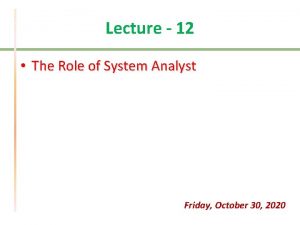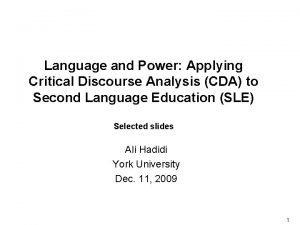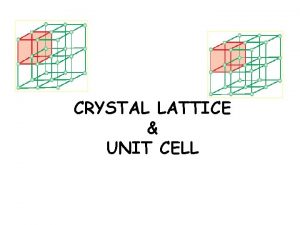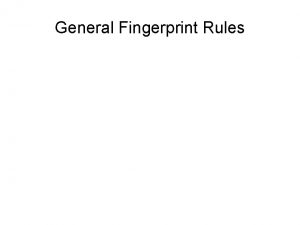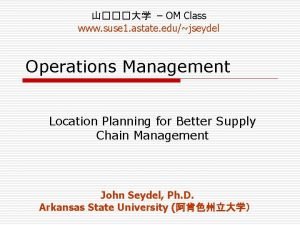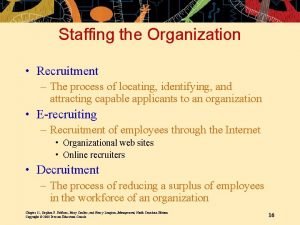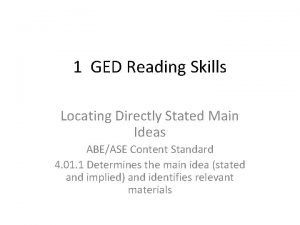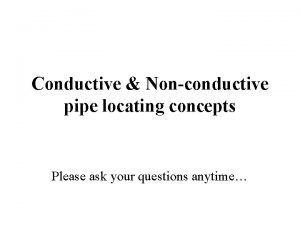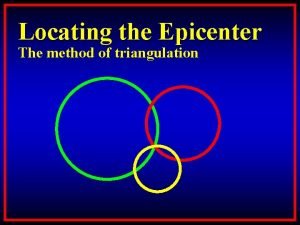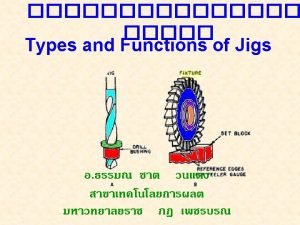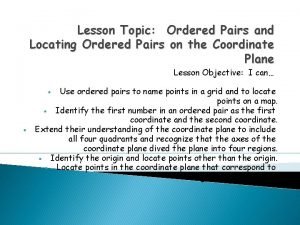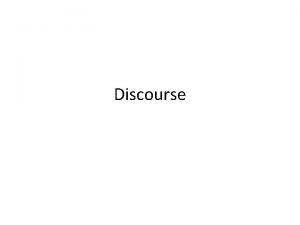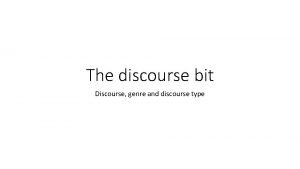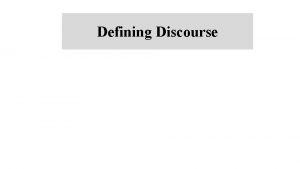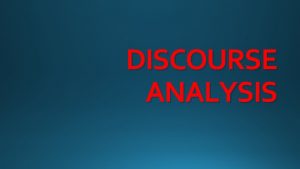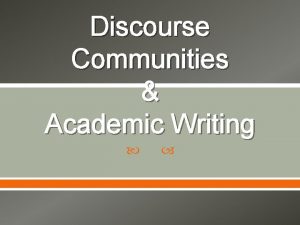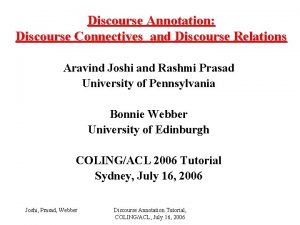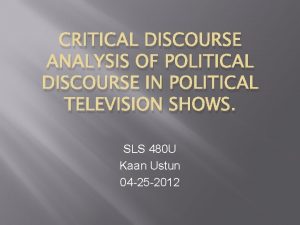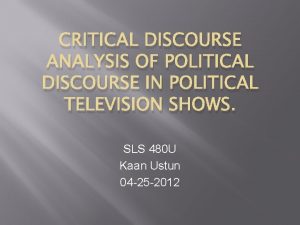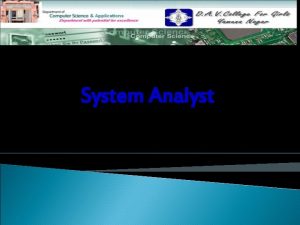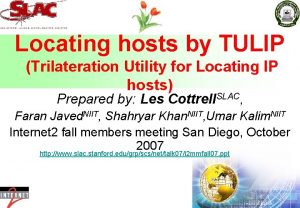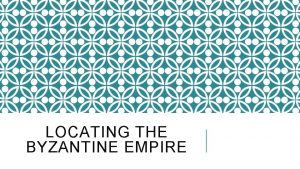Locating the role of the Critical Discourse Analyst
















- Slides: 16

Locating the role of the Critical Discourse Analyst: Reflexivity and Answerability A companion to Chapter 9 by Lisa Patel Stevens From the companion website for Rogers, R. (2011). An Introduction to Critical Discourse Analysis in Education, 2 nd edition. New York: Taylor and Francis at www. routledge. com/textbooks/9780415874298

An Interpersonal Discursive Field: University Researcher and Classroom Teacher

Disturbing Legacies of Educational Research in Classrooms • Seduction and betrayal (Newkirk, 1996). • Pathologizing the methods of the “other” (Stevens, 2009).

CDA in Educational Research • Potentials – Shared metalanguage to engage in discussions about ideologies (Gramsci, 1971) and schooling. • Challenges – How to conduct CDA with (not on) participants? – How to share findings that may be unwelcome?

What We Said, Part 1 Dawn: Lisa: Dawn: Hey, Lisa, that vocab strategy worked really well the rest of the day. The kids seemed to like it a lot. Great. They should be used to adding the pictures and sentences, since we already practiced that with the vocab cards. Mmhmm. I’ll save some samples so you can see their work. OK, cool. Hey, I’ve got another strategy that has the kids do the same thing, except they take more of the lead in picking words they don’t know well. Yeah? Yeah. I’ll drop a copy in your box. And maybe I can come back in to demo it. Sounds good. See you later.

Authority Negotiated and Sedimented Fairclough’s Approach Genre: Casual exchange between teachers Discourse: Casual flow of updates and observations Style: Whose way of being seems to possess more authority? Why?

Authority Negotiated and Sedimented Gee’s Approach Situated Meaning: How is the language used in context? Social Languages: What are the varieties of the language between participants? Figured Worlds: Are there taken-for-granted theories embedded in the language? Discourses: What identities are enacted in time and space in this exchange? How are they related in terms of power and authority?

What We Said, Part 2 Lisa: I wonder if this schoolwide emphasis on organization can even be somewhat stifling for the students who don’t, um, value that way of learning. Dawn: Maybe, but that’s what they need to get through the system and be successful, don’t you think? Lisa: Without a doubt. I think what I’d like to question, though, is how the system might be too narrow in how it defines success for all students. Dawn: Yeah, maybe. (Pause) But that is the system we池e working on, and that is what these kids need for college, isn’t it? Lisa: Yeah, to a certain extent, but also to a certain extent not, ‘cause I’m not sure this is the one and best way of getting there. Does that make sense? Dawn: Um, not really. Until they develop their own systems of organizing their stuff, they need to be shown how to do it.

Authority Negotiated and Sedimented For practice: Analyze and discuss Part 2 Using Genre, Discourse, Style (Fairclough) and Situated Meaning, Social Languages, Figured Worlds, Discourses (Gee)

What kind of analysis is this? • Level One: – What is represented, and what is not? – What are the broad themes and patterns? • Level Two: – Employing tools of CDA to analyze how the structure and form of language express meaning – Employing these tools to interrogate negotiation of power and authority in schooling

Reflexivity (Archer, 2007) An act of self-reference where examination or action bends back on itself, refers to, and affects the entity instigating the action. When CDA is brought out of the academy, it is refracted through the perspectives of teachers, students, parents, etc.

Answerability (Bakhtin, 1990) The promise and portend of answering each others’ invitations to engage When CDA is brought out of the academy, it is answerable to audiences other than academics: teachers, students, parents, etc.

CDA in the field • Across the social fields of schooling and the academy – Different knowledge holds different positions of status – Power is conferred based on differing positions and forms of capital – Analysis of language and ideologies will partially reflect these positions

Non-colonizing uses of CDA • Metalangague that is equitably accessible to invested agents • CDA conducted for purposes other than academic publishing • CDA that moves classroom practices to reflect critical awareness (Alim, 2002)

Guidelines for CDA Practitioners In the Field with Participants Be explicit about the purpose and goals of your research and analysis Be explicit about how CDA works, and what you will be doing with the transcripts procedurally Emphasize benefits of multiple perspectives, and the contingency of your interpretations Always critique (and invite critique) of your own language

Recommended Readings • Gee, J. P. (2004). Language in the science classroom: Academic social languages as the heart of school-based literacy. In E. Wendy Saul (Ed. ), Crossing borders in literacy and science instruction: Perspectives on theory and practice (pp. 13– 32). Arlington, VA: National Science Teachers Association Press. • Hanrahan, M. U. (2006). Highlighting hybridity: A critical discourse analysis of teacher talk in science classrooms. Science Education, 90, 8– 43. • Luttrell, W. (2000). “Good enough” methods for ethnographic research. Harvard Educational Review, 70, 499– 523. • Newkirk, T. (1996). Seduction and betrayal in qualitative research. In P. Mortensen & G. E. Kirsch (Eds. ), Ethics and Representation in Qualitative Studies of Literacy (pp. 3– 16). Urbana: National Council of Teachers of English. • Stevens, L. (2009). Maps to interrupt pathology: Immigrant populations and education. Critical Inquiry in Language Studies, 6(1– 2), 1– 14. • Sullivan, G. B. (2002, September). Reflexivity and subjectivity in qualitative research: The utility of a Wittgenstinian Framework. Form Qualitative Sozialforschung/Forum: Qualitative Social Research [Online Journal], 3(3). Available at: www. qualitative-research. net/fqseng. htm. [Date of Access: September 25, 2002]. • Turbill, J. (2002). The language used to teach literacy: An activity for teachers. Reading Online. Available at: www. readingonline. org/international/turbill 5/index. html.
 Critical semi critical and non critical instruments
Critical semi critical and non critical instruments Critical semi critical and non critical instruments
Critical semi critical and non critical instruments What is discourse analysis
What is discourse analysis Multifaceted role of system analyst
Multifaceted role of system analyst System analyst as agent of change
System analyst as agent of change What is critical discourse analysis
What is critical discourse analysis Schmidt 2002 cda
Schmidt 2002 cda The role of context in discourse analysis
The role of context in discourse analysis Covering octahedral voids
Covering octahedral voids Rules in locating the core
Rules in locating the core Champion cooling company is locating a warehouse
Champion cooling company is locating a warehouse Recruitment is the process of locating identifying and
Recruitment is the process of locating identifying and Stated main idea
Stated main idea Inductive clamp locating method
Inductive clamp locating method Triangulation of epicenter
Triangulation of epicenter Channel jigs
Channel jigs Locating ordered pairs on the coordinate plane
Locating ordered pairs on the coordinate plane



